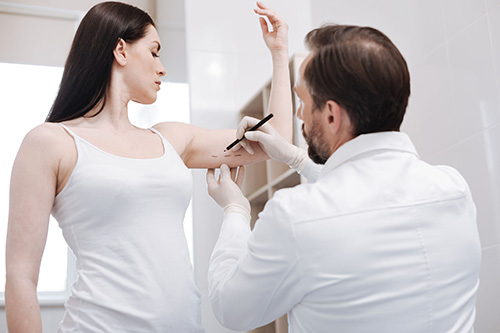
Normally, the blood supply to the veins is controlled by valves that open or close to regulate the flow of blood to the heart. When these valves do not work properly, blood collects, causing varicose veins , pain, skin sores, and a feeling of heaviness. Varicose veins mainly affect people who work every day of the year standing up. Varicose veins usually do not respond to injection sclerotherapy or laser. The most effective therapy for varicose veins is elimination.
Varicose veins surgery
This operation is minimally invasive and is performed on an ambulatory basis. The patient will be admitted early in the day and will undergo a surgical removal that lasts approximately 1.5 hours. The patient usually remains in bed the day of surgery and walks normally the day after surgery. A tight-fitting dressing is applied the day of surgery and is also removed the day after surgery.
The surgery is extremely cosmetic. The incision is half an inch at ankle level and a one-inch incision at groin level. There are a number of other microincisions along some of the branches of the veins in the leg.
Spider veins are not treated with surgery. They are usually treated with sclerotherapy or laser therapy. Radiofrequency ablation surgery is another technique used to treat large varicose veins. Vascular surgeons currently do not use radiofrequency ablation, since the avulsion phlebectomy procedure has been a more effective procedure in removing varicose veins.
The veins carry deoxygenated blood. Varicose veins are knotty, twisted, dark blue in color, and are most often found in the legs. Blood collects in the superficial veins of the leg, just below the surface of the skin, and is administered to deeper veins that run into the calf muscles. The muscular action of the calves helps pump blood to the heart.
One-way valves inside the veins prevent blood from coming back. If these valves do not close properly, blood collects in the superficial veins. Over time, the affected veins become varicose. This type of operation may be for therapeutic or aesthetic reasons.
Medical issues to consider
The type of surgery required is determined from a series of tests, which include a physical exam and/or an ultrasound. You should discuss the following with your surgeon before surgery:
- Medical history, as some conditions may influence decisions about surgery and anesthesia
- Any medicine you take regularly.
- Any reactions or side effects from any drugs you have experienced.
Techniques used for the Surgery of varicose veins:
- Vein stripping with ligation: The vein is removed, an incision is made under the vein, a flexible instrument is passed through the vein to the first incision, and the vein is hooked and removed.
- Phlebectomy: Small incisions (1 mm) are made on the outside of the varicose vein. A tiny hook is then inserted into the incision and a small part of the varicose vein is removed. This is done again until the entire vein is removed.
Post-operative care for varicose veins
Let your doctor guide you, they will give you advice so that you can take care of yourself at home. These are the main cares:
- You should not work for two weeks as you should avoid any physical effort during recovery.
- Do not remove the bandages by yourself. Your doctor will remove the bandages properly.
- To keep the bandages dry while showering, wrap the leg in plastic wrap.
- Walk at least half an hour every day.
- Avoid minimal sun exposure for at least 6 months as sunburn can worsen scars.
- Wear compression stockings for as long as your doctor tells you to.
- Avoid prolonged periods of standing or sitting cross-legged.
- Support stockings may be needed if your legs continue to feel pain.





























